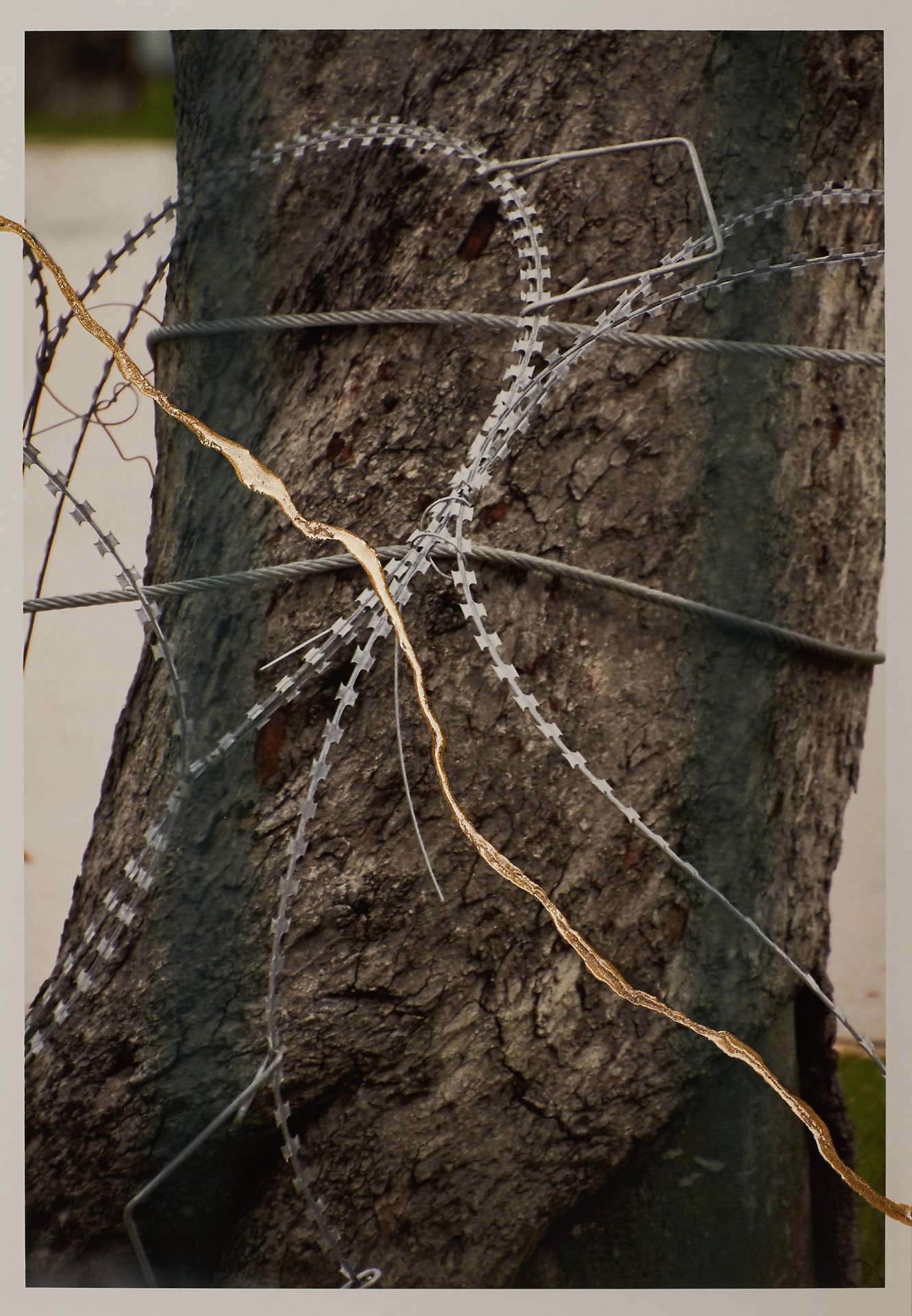Razor wire on a tree trunk in Sanam Luang, Bangkok, Thailand. This tree is one of three trees that were used to hang the bodies of protesters during the 6 October 1976 massacre.
On 6 October 2021, survivors, relatives of the deceased and hundreds of youth protesters gathered at Thammasat University for the 45th anniversary of the 6 October 1976 massacre. Containers, railway cars and razor wire were placed around Sanam Luang, the park in front of Thammasat University, where students were lynched and hanged by the military and royalist civilians.
The project juxtaposes archival images of the 6 October 1976 massacre of students at Bangkok’s Thammasat University with photographs the photographer took during the 2020-2022 Thai pro-democracy protests, in order to understand the root causes of the present-day protests.
The 6 October massacre occurred when Thai police and right-wing paramilitaries opened fire on students protesting the return of former military dictator Thanom Kittikachorn to the country. Today’s student protestors are similarly opposed to the current military dictatorship and are also calling for reform of the Thai monarchy.
Rachurutchata employs the Japanese method of kintsugi by tearing photographs, then mending them with lacquer and powdered gold. Rachurutchata uses kintsugi to symbolize the transformation of trauma into hope and the possibility of a better future.

